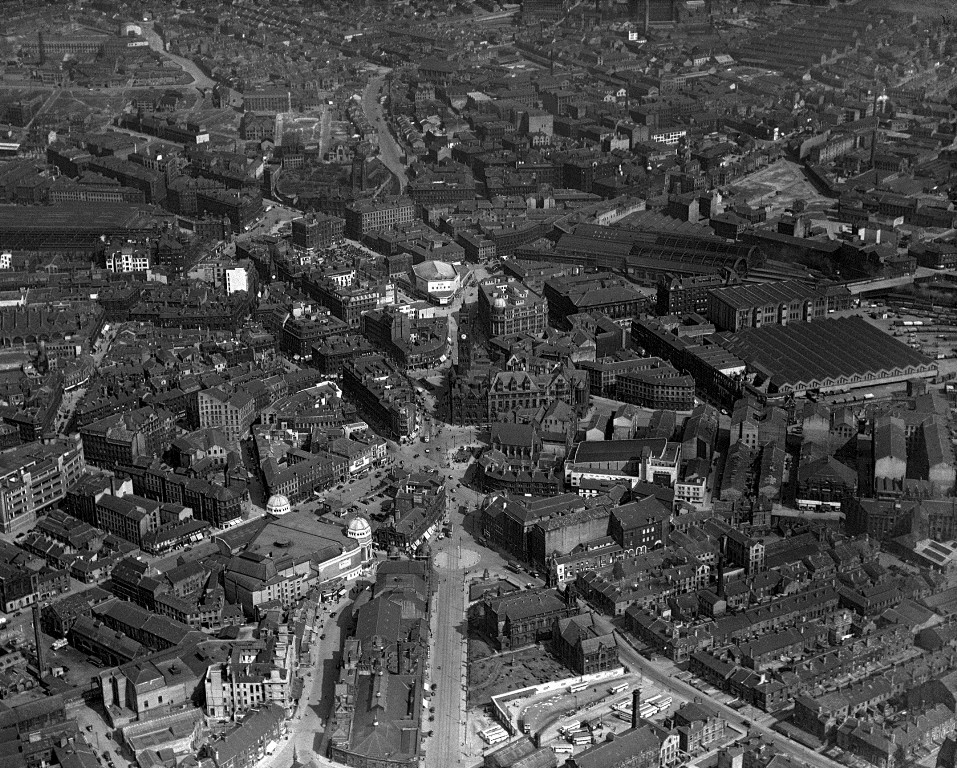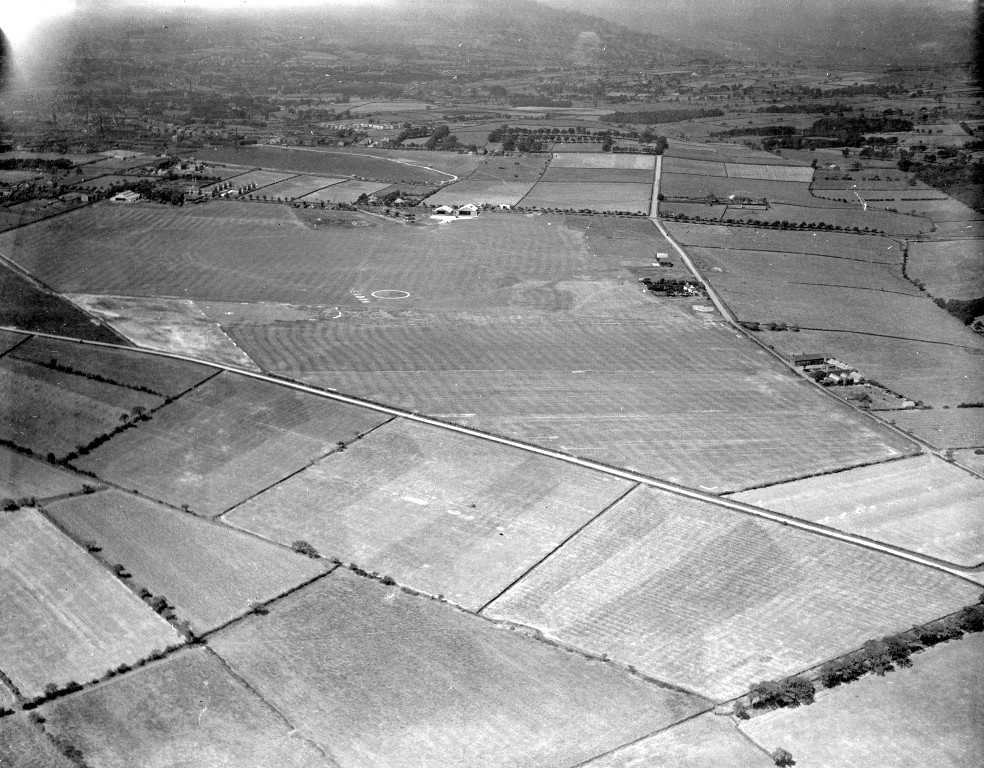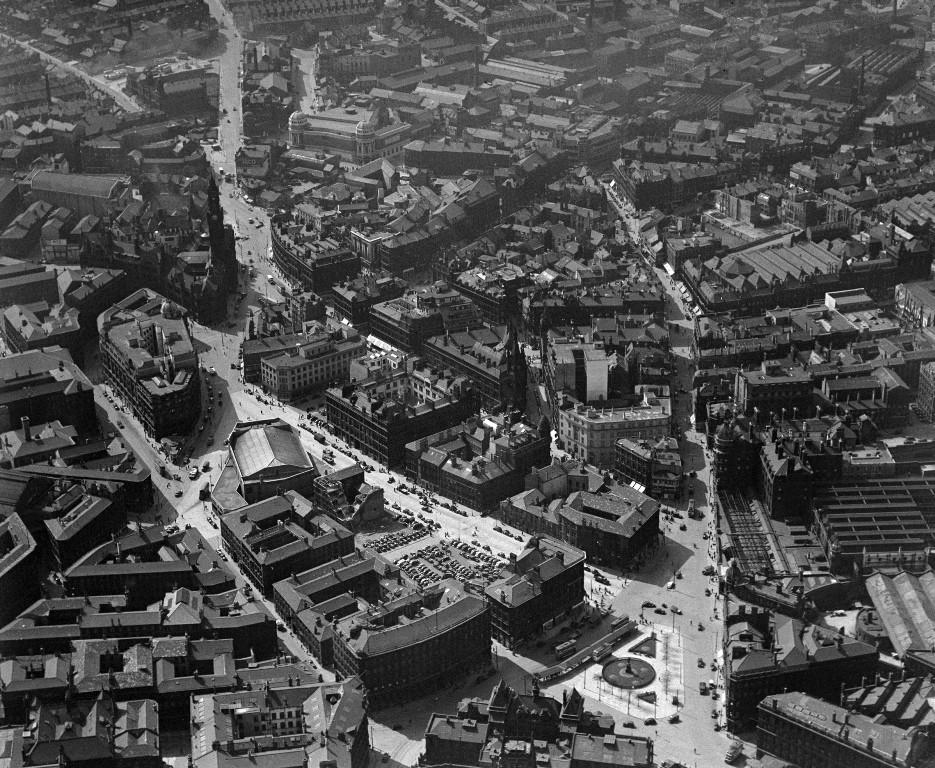John, our Photo Archive Assistant, has written a fascinating blog for us this week on the development of Aerial photography.
He writes:
Originally taken by C. H. Wood in 1947, this aerial view of Bradford city centre was
reprinted as the lead image for an exhibition The North in Focus in 2008. A huge 2 metre
square, it now resides at the entrance to Bradford Museums Photo Archive at Bradford
Industrial Museum and is much admired by all who visit.

What strikes people first is how much has changed over 63 years: more roads and traffic, a
completely different set of buildings. Next to it, much smaller, is an image taken of the same
scene in 2010. It’s interesting to see there have also been significant changes in a meredecade between 2010 and 2020, a major one being the construction of the Broadway
shopping centre.
Another major development in that short time has been the transformation of aerial
photography. Drones, some hardly bigger than a mobile phone, have made aircraft
superfluous. Anyone owning a drone and having appropriate permissions can take a similar
photograph in a very short space of time. All the advantages of digital photography would
enable the ‘pilot’ to edit pictures on location and put them out on the internet within
minutes.
For C. H. Wood, who first entered the world of aerial photography in the 1930s, the
experience was very different. Leaving aside practical considerations such as the journey
from his home in Heaton to the airport, the weather conditions and the cost of aircraft fuel,
C. H. faced a whole range of challenges which his modern drone counterpart wouldn’t even
consider. At that time powered flight itself was still in its infancy and Yeadon ‘aerodrome’
was little more than a field.

Each flight formed a major financial and practical challenge. On the business side of things
it became good practice to try and have as many commissions or customers as possible
for a trip to make it more cost effective. Additionally, flights were always planned to be
circular so the homeward route wouldn’t be the same as the outward one. The plan would
be to photograph continually throughout the whole flight and not only for the arranged
customers. The additional photographs would hopefully be sold to businesses and the
public later who might require a picture of a landmark such as York Minster or Morecambe
seafront.
Conditions were cramped inside the small aircraft: pilot, photographer, a large plate camera
and all the glass plates it required. In such a small space good organisation was essential.
C. H. and later his son Malcolm always made a point of keeping the unexposed plates to
the left of their seating position and the exposed ones to the right. It would be disastrous to
have a set of double exposed images at the end of a gruelling trip.
During photographing the camera was hand held by C.H., leaning out of a window to obtain
a suitable angle. One can only imagine how frenetic the activity would have been; a
sequence of leaning out to photograph and then coming back into the plane to switch
plates would have been repeated more or less continuously throughout the flight. Later, the
switch to film would allow a sequence of photographs to be taken rather than a single
exposure.
Of course, the photographs would then need to be developed back in the studio, itself quite
a long and time consuming task. In the very early days the whole process was carried out
by C. H. alone.

Undoubtedly the development of the drone and digital photography have made aerial
photography easier, cheaper and available to a wider number of people. However, judging
by the work of C. H. Wood, a true pioneer of aerial photography, the quality of the final
product then was every bit as good.
One Response
It should still be more or less like this, so much destruction and waste of money on concrete buildings in the 60s, then more upheaval between 2010 – to this day. I personally like how it was in the 1930s, looks like there was so much freedom whether you was walking or driving.